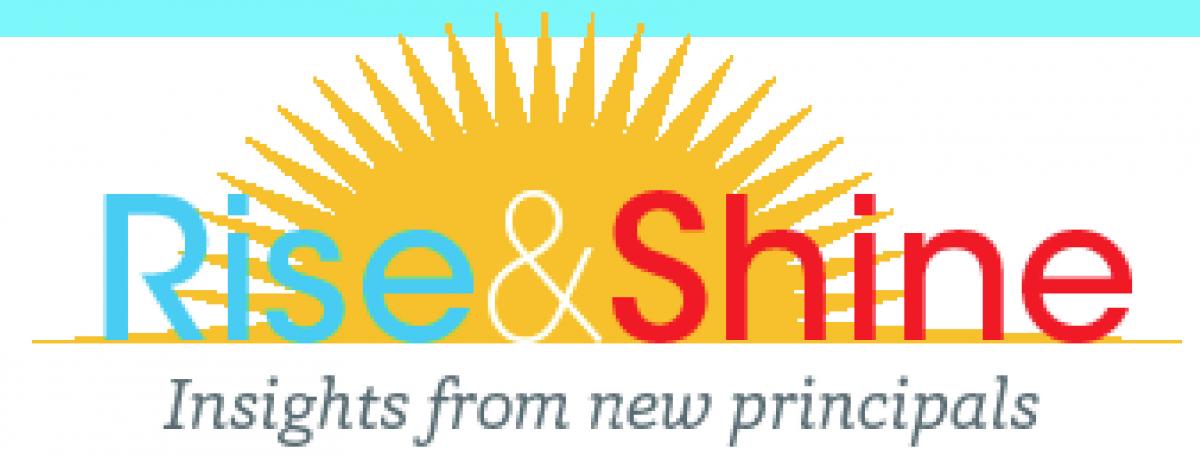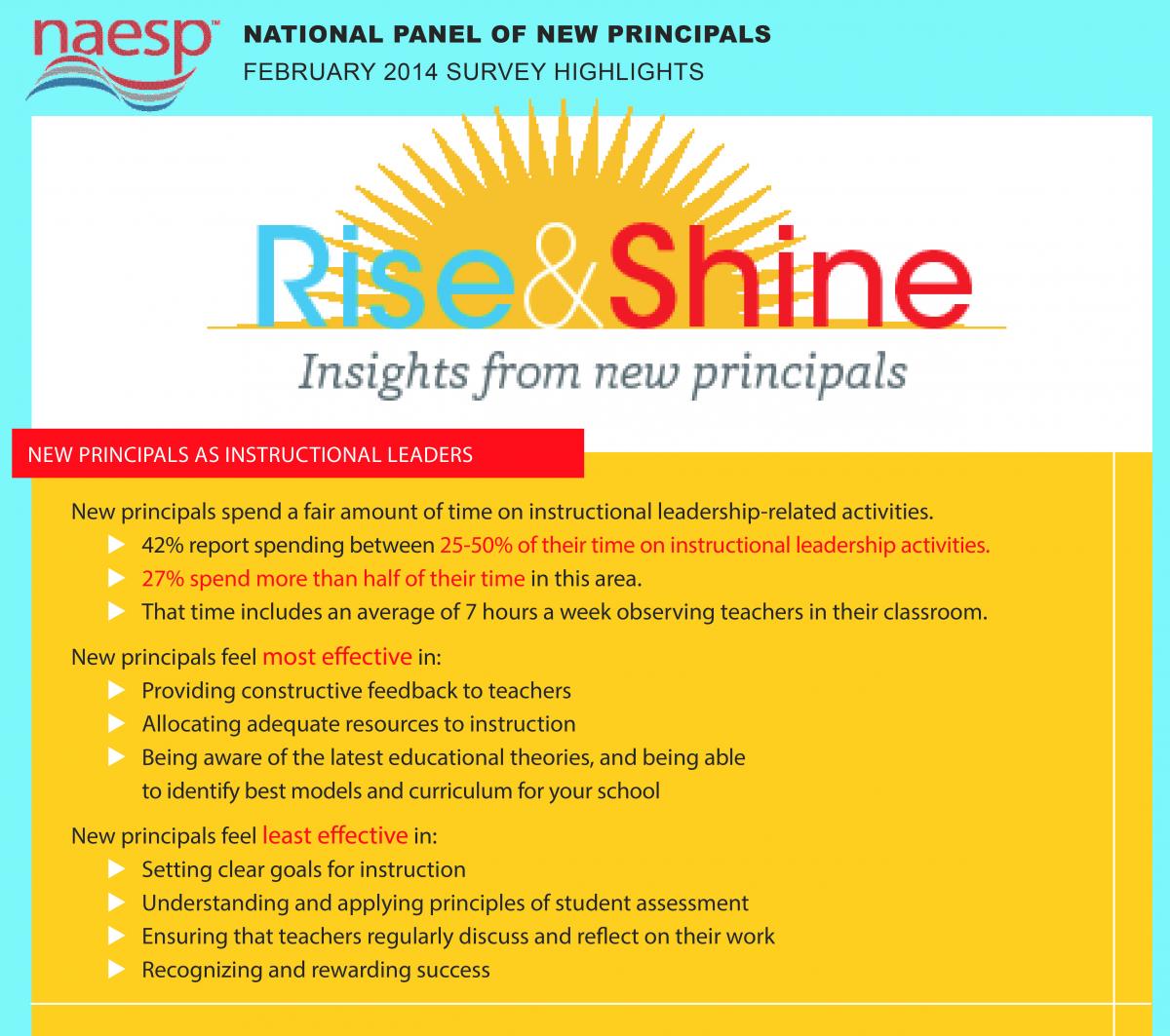New Principals and Instructional Leadership: 4 Skills to Grow
Communicator April 2014, Volume 37, Issue 8
Communicator
April 2014, Volume 37, Issue 8
 NAESP’s newly formed National Panel of New Principals aims to explore the struggles and successes of early career principals. Each month, the panel of first- and second-year principals answers a few brief questions about their experiences. Recently, the panel explored the many facets of instructional leadership. Here are a few nuggets.
NAESP’s newly formed National Panel of New Principals aims to explore the struggles and successes of early career principals. Each month, the panel of first- and second-year principals answers a few brief questions about their experiences. Recently, the panel explored the many facets of instructional leadership. Here are a few nuggets.
New principals spend a fair amount of time on instructional leadership-related activities: 42 percent report spending between 25-50 percent of their time on instructional leadership activities. Twenty-seven percent spend more than half of their time in this area. That time includes an average of 7 hours a week observing teachers in their classroom.
New principals feel most effective in:
- Providing constructive feedback to teachers;
- Allocating adequate resources to instruction; and
- Being aware of the latest educational theories, and being able to identify best models and curriculum for your school.
New principals feel most challenged in:
- Setting clear goals for instruction;
- Understanding and applying principles of student assessment;
- Ensuring that teachers regularly discuss and reflect on their work; and
- Recognizing and rewarding success.
Top Instructional Leadership Resources
Here are resources that new principals and veterans alike can use to address areas in which they feel least effective.
Setting Goals
“Putting Your Beliefs into Action.” (Principal, May/June 2013)
Maryland principal Christopher Wooleyhand shares how principals can close the achievement gap with a six-step decision-making and action-taking framework.
“Setting a Vision for Change Leadership.” (Principal, March/April 2013)
Four principals share their challenges and triumphs in leading their schools through shifts.
Understanding and Applying Student Assessment
“Testing To, and Beyond, the Common Core.” (Principal, January/February 2014)
Linda Darling-Hammond’s exploration of Common Core assessments illuminates how assessments can improve teaching and learning.
“Managing Multiple Measures.” (Principal, May/June 2012)
Charles Pasquale examines how principals can use multiple measures to inform decisions about instruction.
Ensuring Discussion and Reflection Among Teachers
“Time Shift: Developing Teacher Teams.” (Principal, January/February 2013)
Principals can use their time effectively and encourage collaboration by working with teacher teams, writes principal Kurtis Hewson.
“Help Teachers Be Their Best.” (Principal, January/February 2013)
Todd Whitaker shares his tips for encouraging teacher excellence, including creating opportunities for collaboration.
Recognizing Success
“Foundations of a Strong School Culture.” (Principal, January/February 2014)
Asking for help and showing appreciation are the cornerstones of a strong school culture, writes retired principal Peggy Smith.
“Spirit Makes a Difference.” (Principal, May/June 2012)
Maine principal Linda Bleile emphasizes pride at her school; here, she shares her school spirit secrets.
Click for an expanded view. |
To join the panel, or nominate a colleague for it, please visit naesp.org/national-panel-new-principals.
—
Copyright © 2014. National Association of Elementary School Principals. No part of the articles in NAESP magazines, newsletters, or website may be reproduced in any medium without the permission of the National Association of Elementary School Principals. For more information, view NAESP’s reprint policy


